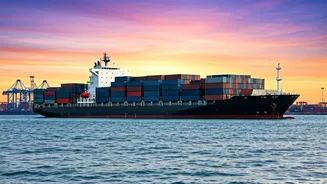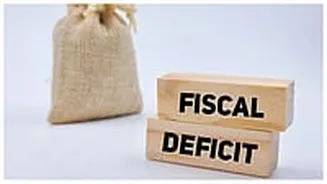Charting Trade Goals
The meeting reflects the government's strong dedication to increasing India's influence in global trade. It is designed to be a collaborative discussion
between the Prime Minister and key exporters. The intention is to gather insights and develop strategies to ensure India's goods and services can compete successfully worldwide. By holding such a meeting, the government demonstrates its commitment to supporting the export sector, which is essential for economic growth. The conversation is expected to address several key issues, including streamlining processes, reducing trade barriers, and identifying innovative methods to boost exports across different sectors. This strategic dialogue shows a proactive approach by the government to adjust to changes in the global economy and provide support for Indian businesses to thrive in the competitive international market.
Enhancing Competitiveness
A major topic of discussion will focus on strategies to improve the competitiveness of Indian exports. This could involve exploring ways to reduce production costs, improve product quality, and promote Indian brands globally. The government is also likely to examine the effectiveness of existing schemes and policies designed to support exporters. Potential improvements could include simplifying regulations, offering financial incentives, and providing better infrastructure for trade. A crucial aspect of this discussion will involve keeping up with global market trends. This includes understanding the specific requirements of various international markets and adapting Indian exports to meet those demands. Furthermore, there might be conversations on how to use technology and digital platforms to streamline trade processes and enhance market reach. The objective is to establish an environment where Indian exporters can compete effectively and expand their market share worldwide, which will ultimately help the nation's economic growth.
Streamlining Export Processes
Efforts to simplify and streamline export procedures will also be central to the meeting. The government is committed to reducing bureaucratic hurdles that can slow down trade. This involves simplifying documentation requirements, quickening customs clearance, and adopting digital solutions to ease the export process. The meeting will likely review the progress of current initiatives aimed at cutting down the time and costs associated with exporting. Furthermore, exporters are expected to provide feedback on the challenges they encounter during trade activities. This will enable the government to fine-tune policies and introduce new measures. By reducing the complexity of export procedures, the aim is to make it easier for Indian businesses, particularly small and medium-sized enterprises (SMEs), to participate in global trade. This streamlining is crucial for encouraging wider participation and ensuring that Indian products can reach international markets efficiently, leading to increased export volumes and economic benefits.
Identifying New Opportunities
The meeting will also be an opportunity to identify and capitalize on new export possibilities. Discussions will cover emerging markets, untapped sectors, and areas where India can boost its export presence. Exploring new markets is vital for lessening reliance on current trade partners and broadening India's export base. This could involve looking at regions where demand for Indian goods and services is rising or where trade agreements can create new chances. The meeting may involve analyzing specific sectors with high potential, such as technology, pharmaceuticals, and manufacturing, to pinpoint new export opportunities. This strategy also involves addressing issues like quality control, sustainability, and market-specific needs. By examining new opportunities, the government aims to encourage diversification in India's export basket. It aims to reduce risks related to over-reliance on a few products or markets and stimulate economic growth, creating more employment and investment.
















